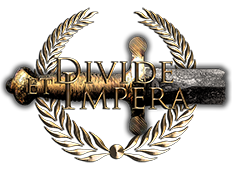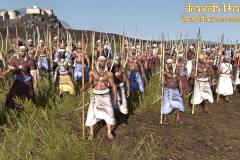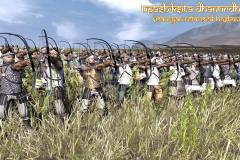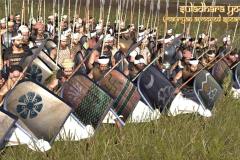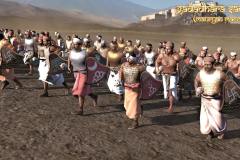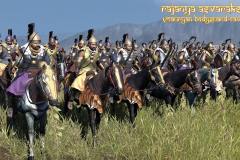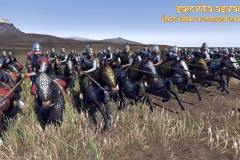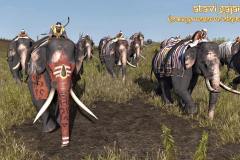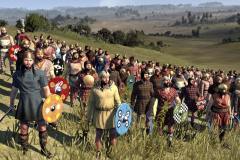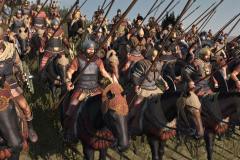Maurya Samrajya
The Maurya Samrajya or the Mauryan Empire was founded by Chandragupta Maurya, grandfather of Ashoka the Great, the famous Indian Emperor who ruled over the largest empire to ever span the Indian subcontinent. In 305 BC to 303 BC, Seleucus I Nicator initiated the Seleucid-Mauryan war in an attempt to re-establish the Indian satrapies of the Macedonian empire taken over by Chandragupta. The war ended in a Mauryan victory in which Seleucus ceded Gedrosia (Maka), the Hindu Kush, Punjab and parts of Afghanistan to Chandragupta. From this arrangement, Seleucus received 500 Indian war elephants, which subsequently influenced the Wars of the Diadochi. Seleucus and Chandragupta also agreed to a marriage alliance in which Berenice the daughter of Seleucus was offered as a bride to Chandragupta. It has been 20 years since the death of Chandragupta and his son Bindusara sits upon the Mauryan throne. Maka represents the Western most extent of the Mauryans who look to expand Westward on Persian and Hellenic factions that formerly antagonised them after Alexander’s conquests. As such, it has a special “Provincial Empire” government.
The Mauryan empire is also the only Hindu faction in-game with a Buddhist temple chain to signify the prevalence of Buddhism within their realm. Buddhism would become the major religion of the empire under the reign of Ashoka. The Mauryan faction boasts the best elephant units, long ranged archers and powerful armour penetration and shock infantry. While they lack in the cavalry and spearmen department, they do get access to the former with their unique reforms should they conquer the Nomadic lands of Transoxiana and Xvarazm to the North and spread the Hindu faith in those provinces. This is indicative of how subsequent Nomadic incursions into the Indian subcontinent influenced the Indians to adopt their own heavily armoured shock cavalry contingents.
